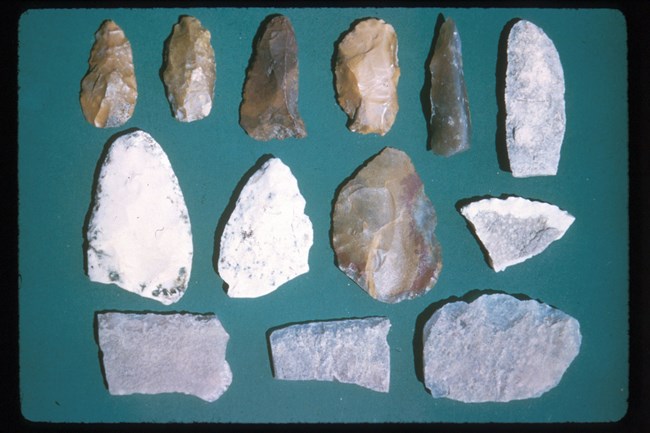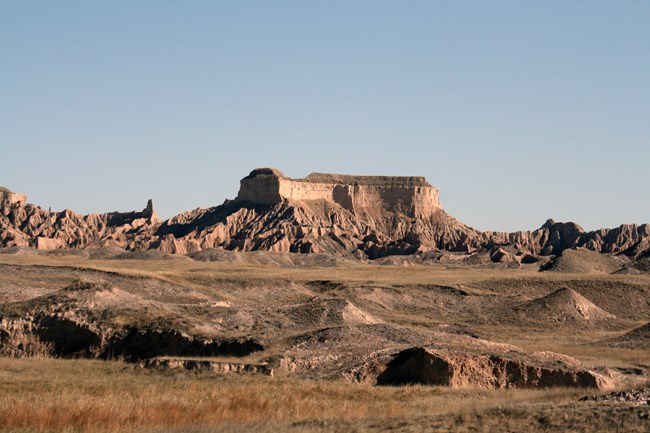Part of a series of articles titled History & Culture in the Badlands.
Previous: Mako Sica: Naming the Badlands
Article

NPS Photo
Archaeology is the study of past human life. Since the ancient inhabitants of the Badlands are not around to tell their story, archaeologists must reconstruct their lives using the objects and materials that remain. Despite the difficulties of living in such harsh and unforgiving terrain, the earlier inhabitants of this land left behind a rich collection of evidence in Badlands National Park.

NPS Photo
The oldest archaeological site in the Badlands is over 12,000 years old and likely represents a temporary camp for traveling hunters. Over 300 sites have been found and described within the park’s boundaries. Some of these locations contain scorched rock and charcoal that indicate ancient campfires. Other sites are full of bison bones that mark prehistoric butchering locations. A few areas show evidence of quarrying and worked stone. This indicates where ancient residents of the Badlands fashioned tools out of chert, chalcedony, and other hard rocks. Pottery can occasionally be found at these stone-working sites.
To date, archaeologists have not discovered any sign of permanent habitation in the park. Instead, campfire, butchering, and quarry sites suggest that the Badlands served as a seasonal hunting ground for a succession of peoples. The earliest sites belong to a culture known to archaeologists as “Plains Archaic,” while more recent sites include the Arikara and the Oglala Lakota, tribes found in South Dakota and North Dakota today. Archaeological evidence paired with oral histories indicates that the Arikara were pushed out of the region by the Oglala Lakota in the 1700s; the succession of earlier tribes and cultures in the Badlands is uncertain.
Many of the archaeology sites are found on the margins of eroding sod tables, fragments of ancient prairie found throughout the park. Due to how easily the Badlands wear away, exposed archaeological sites must be surveyed and described quickly, before they are broken apart and washed away. If you come across any material in the park that you suspect may be archaeological, please let a park ranger know!
Part of a series of articles titled History & Culture in the Badlands.
Previous: Mako Sica: Naming the Badlands
Last updated: November 10, 2020